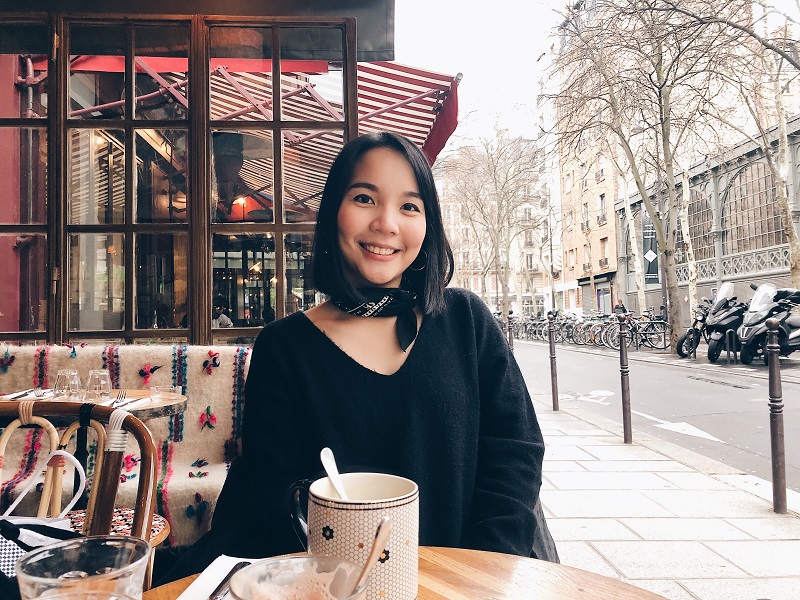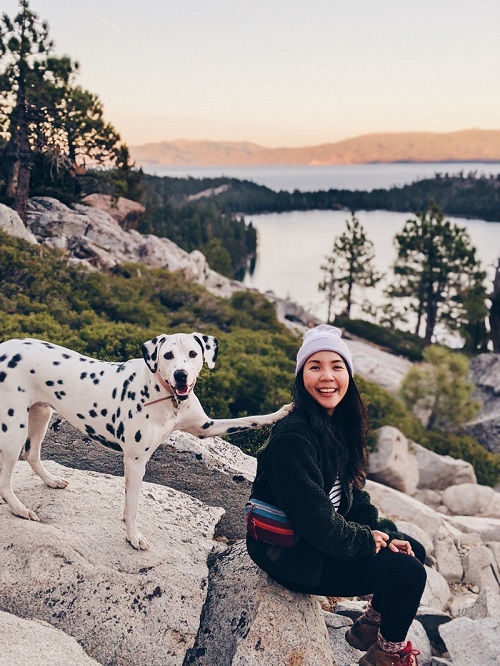
When Bibi Tanjasiri enrolled in Springboard’s UX Career Track she was no stranger to design. For several years, she had freelanced as a graphic designer and food stylist in her native Thailand, working with restaurants and ad agencies to shoot photographs for menus and editorials in epicurean magazines.
Bibi had also recently completed another boot camp in UX design, but she felt she didn’t have enough opportunities to work on hands-on projects and emerge with a job-ready portfolio. After she completed Springboard’s UX Career Track, the Employer Partnerships team connected Bibi with Michelle Matthews, the head of product design at Hatch, a company that produces smart sleep products. Featured on NBC’s Shark Tank in 2016, Hatch has raised over $18.7 million since its founding and counts Amazon as an investor. Even though the company wasn’t hiring a UX designer at the time, Michelle liked Bibi’s work so much that she brought her on as a freelancer. Just two months later, Bibi was brought on as a full-time product designer, her dream role.
I first joined Hatch in February as a part-time freelancer. Nadeja Adams [senior account executive for Employer Partnerships at Springboard], helped me connect with Michelle Matthews, who was the head of product at Hatch at the time. So I emailed Michelle and she answered really, really quickly. However, she said the hiring process for that role was nearly finalized at that point, so she asked if I was interested in freelancing. I was like, "Okay, I'll do anything." It was very hard to find a job during the pandemic. I’d been searching for a job since July at that point, so it had been many months. She interviewed me once and at the end of the interview, she said, “Okay, let’s jump right in.” So I worked as a part-time contractor for about two months. Then, after they hired a senior product designer, they wanted a junior designer and they asked if I was interested. I was like, "Oh my God, I've been waiting for this for so long." Since I had been freelancing with them, I know the company, the culture, the product, and they know me, too. So I think it was really good that I built that relationship with them as a freelancer.
I really, really hoped I would. I also landed another freelance gig at the same time and I was working another full-time role. So I kind of juggled three jobs because there was no guarantee that I would land a full-time role with Hatch. It was a hard time, but it was worth it.
"I had a lot of help from my career coach, Alison. She helped create action items to push me during our coaching calls. For example, every week she would want me to connect with 10 people and apply to 30 or 40 jobs."
It was really good to have that push, but [the job search] was hard because it was very competitive. A lot of designers who already have experience got laid off, and I had to compete with them. At the same time, I didn’t really have any experience in UX design. So apart from applying to jobs and connecting with people, I did volunteer work and participated in hackathons to build my portfolio and gain more experience.

Yes! We still have one-on-one mentorship every week. It’s so good because she was eager to help me because I’m very, very junior and I still want to learn a lot, and she offered to help me.
I’m originally from Thailand, and I freelanced a lot while I was living there. Since I grew up there, I had a lot of connections and it was easier to get clients. But here in the U.S., I don’t know anyone, so it’s a lot more difficult to freelance here. At the time I was working as a graphic designer and food stylist, so a lot of my work focused on restaurants and food media. Since I had a unique skill set, people would come to me if they wanted something designed that is related to food, and I would do the styling and photography.
I’d been working as a graphic designer for five or six years, and at some point, I discovered UX design. Graphic designers create a lot of beautiful things to help companies achieve their marketing goals, but that’s it. It wasn’t very meaningful for me. I wanted to do something more meaningful that would help people. When I discovered UX design, it was exactly what I was looking for. Then I started taking a few online classes to understand how it works.
I actually started learning UX design through a part-time course at General Assembly. At the time, I just wanted to know if UX was right for me and if I really wanted to switch careers or not. That’s when I realized, "Okay, I'm going to do this. I'm going to switch careers.
"But during my course at General Assembly, I only had the chance to complete one project. I felt that was absolutely not enough to change careers by having only one UX project in my portfolio."
So I started looking into how to get more work experience and dig deeper into the UX process. I researched a few different courses, and I felt like Springboard really answered my questions. At Springboard, I worked on three projects, and one of them was the Industry Design Project with a real company, which I really wanted to try. Also, there was mentorship and career coaching, so I felt like Springboard would be a great path for me if I really wanted to switch careers.

I really liked the mentorship. The mentorship was another thing that pushed me because it’s really hard to do the course 100% online at my own pace while I had a full-time job. So having calls with mentors and career coaches every week helped me to stay on track and not be lazy. Overall, the course is really good and pretty comprehensive.
Apart from taking the course at Springboard, I would suggest getting hands-on experience to build your portfolio by volunteering, joining hackathons--anything you can think of. Work experience is really, really important when you interview for a job because companies are going to ask [about your work samples] for sure. My advice is to try to gain more experience, either during the course or after finishing it.









